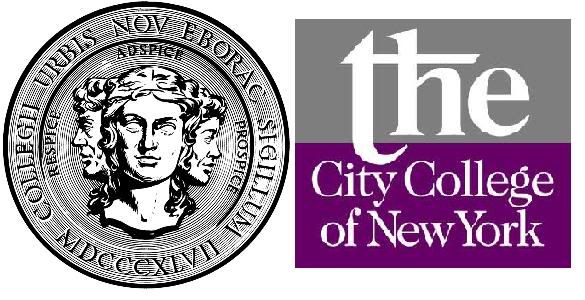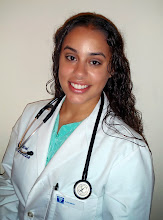
Monday, October 24, 2011
Friday, September 16, 2011
A Change of Heart: "Abstinence-Only Plus" Sexual Education
When I read an article this morning in the the Texas Tribune about abstinence-only sexual education, I was reminded of my work at Gay Men's Health Crisis (GMHC) in 2009. While working for GMHC's public policy department, I had an opportunity to research various policy issues, write articles, voter's guides and policy briefs. One brief I wrote was on abstinence-only sexual education funds drying up, and President Obama replacing them with evidence-based sexual education. Former US President/Texas Governor George W. Bush was known for supporting public school sexual education programs that encouraged children and adolescents to refrain from having sex; such program did not teach the science behind conception and sexually transmitted infections, nor about condoms and other contraceptives. Studies have even found that children taught abstinence-only, tend to have more gender-biased attitudes, have higher rates of teenage pregnancy and certain sexually transmitted infections. Despite President Obama's support for comprehensive sexual education programs, the Texas health department did not apply for federal funding that would help get these programs off the ground and into Texas public schools.

The Tribune article describes a recent trend in Texas to implement "abstinence-plus" sexual education. While abstinence is still encouraged, children in the seventh and eighth grade will also learn about condoms and other forms of contraception and protection from sexually transmitted infections. This change of heart is the result of an increasingly large number of teenage girls becoming pregnant and growing statistics of contraction of sexually transmitted infections among adolescents, within the state. While we all hope people engage in sex only when they are mature mentally as well as physically, it is not realistic to assume all teenagers will abstain from sex until marriage. Instead, it is better to empower them with the tools (mental and physical tools) to take charge of their sexual health and act responsibly.
Monday, July 11, 2011
Annual Medical Education Conference 2011


Wednesday, June 22, 2011
Patient Simulator
By Julian Gonzalez
On March 3, 2011 MAPS traveled to Mount Sinai School of Medicine (MSSM) to check out some of the school’s state-of-the-art patient simulators. First, it needs to be said that MSSM is beautiful! There are a lot of windows with natural light, couches strewn about—it is simply gorgeous. Also, students at Mount Sinai get to live in the city, which is often a big priority on many medical school applicants’ lists of priorities, but back to the simulators!
At MSSM, we worked with current anesthesiology residents. They taught us how to insert a breathing tube into someone who required CPR through the use of real instruments and a mannequin. Although I did a better job choking the poor mannequin, we eventually all learned. The strange part was how rough you actually have to be to insert the tube. Also, as with anything in the human body, many things can do wrong such as the tongue blocking the airway, tearing the inner lining of the trachea, or simply forgetting to deflate the small balloon that initially keeps the tube in place. The mannequin was set up so that if proper intubation was complete, the lungs would inflate and deflate accordingly.
Next, we practiced placing an intravenous line into a thin plastic tube to simulate phlebotomy of real human blood vessels. Again, I practically killed my patient but the good news is I’m not yet a physician! Though I hope it never happens once I become a physician, I can see why it is hard to stick someone who is donating blood (a scenario that as a donator, I know all too well). I tip my hat to my fellow MAPS members who successfully placed a line on the first try! It took me six times—yikes!
Lastly, we worked with the full body patient simulator. It was simply amazing to say the least. The patient simulator is essentially a full-body mannequin with a pulse, body temperature and other real vital signs. It can be hooked up to the real machines that are used in hospitals such as an O2 Saturation reader, EKG machine, pulse monitor, and can event respond to injections of various drugs. The simulator detects all the medicine, and can have the expected or adverse effects. Furthermore, you can see and sense many other details of the simulator, such as body temperature increasing or decreasing by touching the skin, seeing the pupils dilate or constrict based on illness, and see the diaphragm descend or ascend as it breathes. The simulator was extremely life-like. This taste of what medical students and physicians do makes me even more eager to start medical school!
Sunday, May 22, 2011
Harlem, Take Care of Yourself 2011




Friday, May 6, 2011
To be a part of the event, email: HarlemTakeCare@gmail.com
Thursday, November 18, 2010
Annual Biomedical Research Conference for Minority Students
 I became an honors research associate at City College in January 2010. I work in a neuroscience laboratory with Dr. Jay Edelman. My current project examines the effect visual instructions have on express saccades (short, jerky eye movements made in response to an auditory or visual stimulus). Last week I had the pleasure of traveling to Charlotte, NC to give a poster presentation on my project at the Annual Biomedical Research Conference for Minority Students (ABRCMS).
I became an honors research associate at City College in January 2010. I work in a neuroscience laboratory with Dr. Jay Edelman. My current project examines the effect visual instructions have on express saccades (short, jerky eye movements made in response to an auditory or visual stimulus). Last week I had the pleasure of traveling to Charlotte, NC to give a poster presentation on my project at the Annual Biomedical Research Conference for Minority Students (ABRCMS).




